The history of Anacostia Museum illustrates that the very notion of institutional identity is challenged by the situation of the African American museum…Institutional identity in this sense implies a cohesiveness and sense of continuity that often does not exist, other than that found in the most generic notion of exhibiting African-American history and culture.
—Portia James, Senior Historian at the Anacostia Museum, 1996

Smithsonian’s Anacostia Community Museum has always served Washington, D.C.’s Anacostia neighborhood and other local communities. Since its founding in 1967, the neighborhood museum has adapted its scope to the evolving needs of its audiences. In this post, we’ll briefly explore the Museum’s shifts through its four name changes: Anacostia Neighborhood Museum (1967), Anacostia Museum (1987), Anacostia Museum and Center for African American History and Culture (1995), and Anacostia Community Museum (2006).
As Smithsonian Secretary S. Dillon Ripley began to explore the capital city in search of a location for a new a neighborhood museum in 1966, local community activists lobbied for the site to be located in Anacostia. Motivated by this enthusiasm, Ripley chose the neighborhood site and appointed minister and organizer John Kinard as the Museum’s founding director. Though established and funded by the Smithsonian, the Anacostia Neighborhood Museum relied heavily on community collaboration. Local teenagers helped renovate the Museum’s first home in the Carver Theater, advisory councils worked with staff on exhibitions, and educational programming was created for school children. All but one of the eight original staff were temporary and funded privately.
Two early exhibitions, The Rat: Man’s Invited Affliction (1969) and Lorton Reformatory: Beyond Time (1970), represent the success of community collaboration and the Museum’s commitment to the prosperity of city residents. For instance, staff consulted with children and the head of D.C.’s rat control from the outset in planning The Rat. The team argued that Anacostia’s rat infestation problem was not inevitable, but rather the result of government neglect. The exhibit did what museum professionals mostly only dream their work will do: spark change. Its popularity led to action, in this case, better sanitation efforts, by Congress and the local government. The following year, staff opened Lorton Reformatory, created with the men imprisoned in the correctional complex. By showing how the men “spend their time” through art works, crafts, music, and dramatic programs, the Museum hoped visitors would leave with a better understanding of the needs for new services and reentry programs.
Though the Smithsonian had envisioned that one of the key missions of the Museum would be to serve as a gateway to its museums downtown, Black Washingtonians in the neighborhood claimed and understood the site as a space of their own. The Museum was invested in the community, and the community was invested in the Museum.

In the Museum’s next phase as the “Anacostia Museum,” a change made in 1987, staff continued to engage with local communities and grapple with complex questions about exhibiting Black history, though on a slightly larger scale. By this time, the advisory council had become a formal Board of Directors, security guards watched over the loaned collections, and the physical Museum had moved to a larger, though less accessible, location. Additionally, historians Dr. Gail S. Lowe and Portia James joined Louise Daniel Hutchinson to form the Museum’s research team, which focused on creating scholarly materials related to Black history.
During this time, the institution shifted its focus to include more national and international audiences. Its exhibitions were praised as they traveled around the nation as part of the Smithsonian Institution Traveling Exhibition Service, and staff worked with other Smithsonian leaders to collect more objects relating to African American history. In 1993, the Museum was finally granted permission to begin its own permanent collection. One might argue that another major milestone for the Museum was its 1994 exhibition Black Mosaic, Community, Race and Ethnicity Among Black Immigrants in Washington. Where staff had always continually committed to exhibiting African American history, this major exhibition explored the experiences of the city’s Black immigrants.
The name of the space changed once again in 1995 to the Anacostia Museum and Center for African American History and Culture. One notable success during this period was the Museum Academy, an afterschool program for children in Washington's Ward 7 and Ward 8 neighborhoods, started in 1999.
Three years after President Bush signed legislation to establish the National Museum of African American History and Culture in 2003, the Anacostia Museum changed its name a final time to the Anacostia Community Museum. Today, the Museum continues to exhibit Washington, D.C. history and culture, so that that local stories may illuminate national and global social issues.
And that commitment to local audiences continues even with their doors closed in the midst of the coronavirus pandemic. The Museum has hosted weekly webinars and launched Moments of Resilience, a digital space for people to submit and share stories about their recent experiences—from COVID-19 to the protests against police brutality.
Further Reading
- James, Portia. “Building a Community-Based Identity at Anacostia Museum.” Curator: The Museum Journal 39, no. 1 (March 1996): 19-44.
- Ruffins, Fath Davis. “Building Homes for Black History: Museum Founders, Founding Directors, and Pioneers, 1915-95.” The Public Historian 40, no. 3 (August 2018): 13-43.
- Ruffins, Fath Davis. “Culture Wars Won and Lost: Ethnic Museums on the Mall, Part 1: The National Holocaust Museum and the National Museum of the American Indian.” Radical History Review 1997, no. 68 (Spring 1997): 79-100.
- Smithsonian Anacostia Community Museum history, Smithsonian Institution Archives
Produced by the Smithsonian Institution Archives. For copyright questions, please see the Terms of Use.

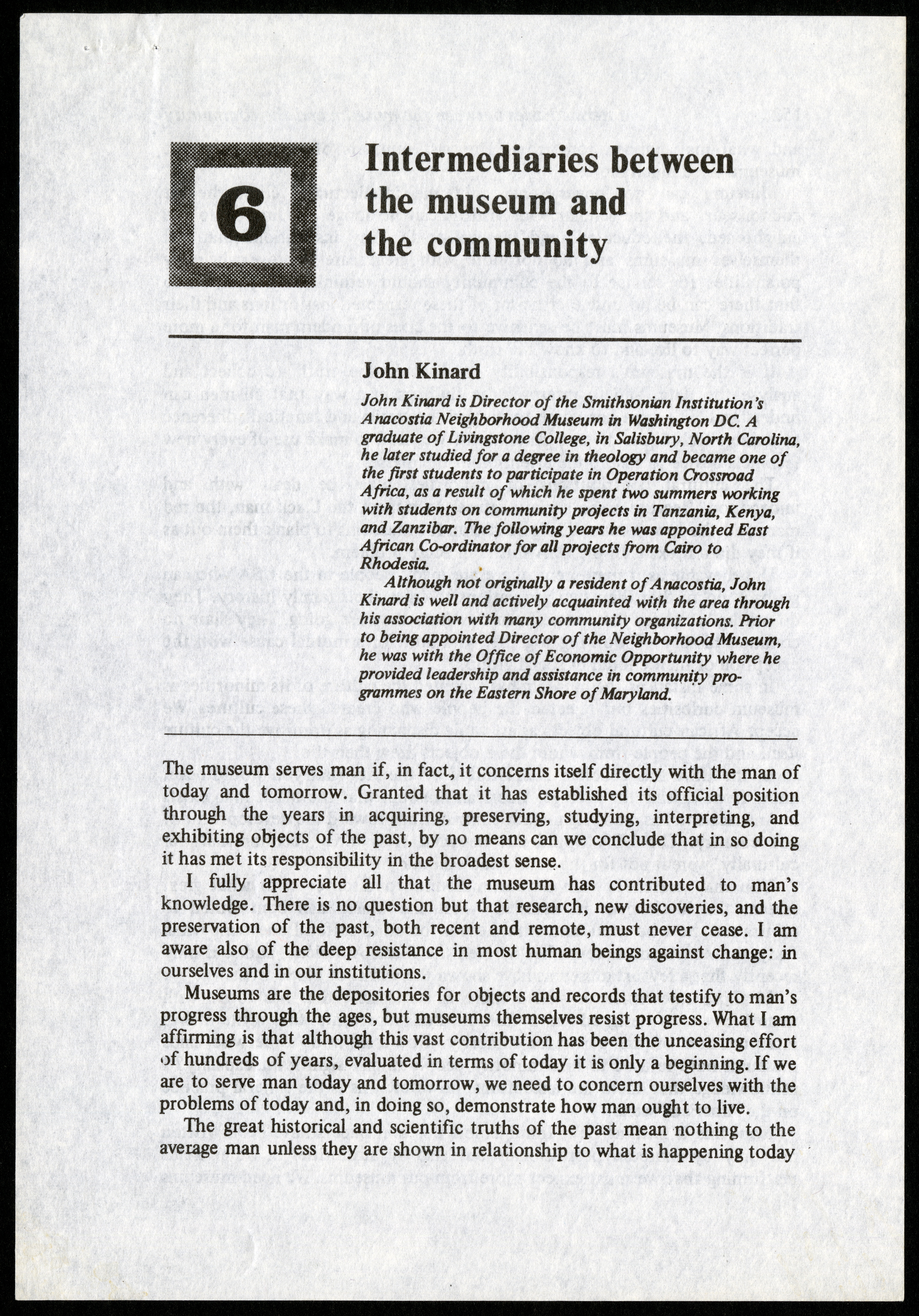
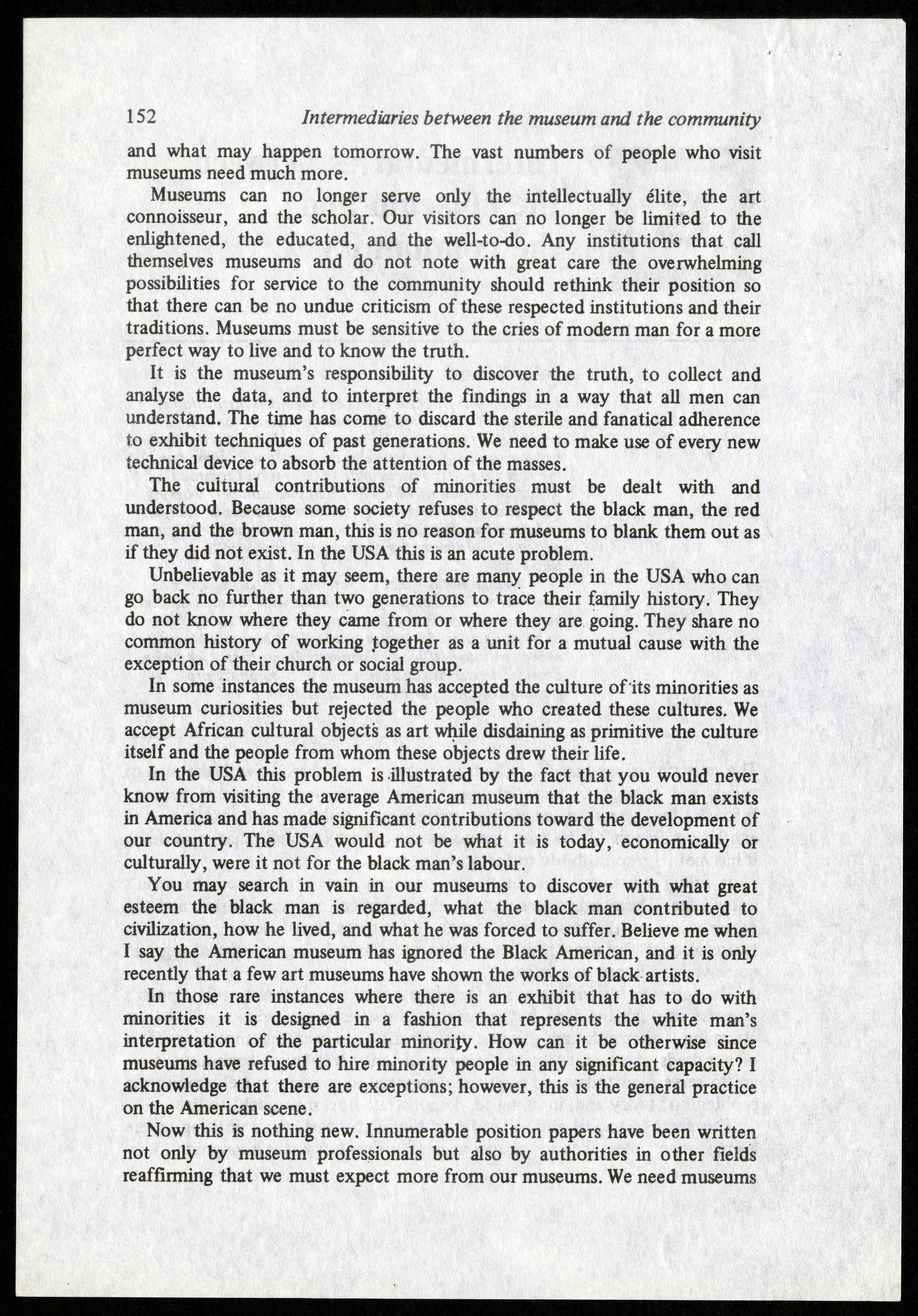
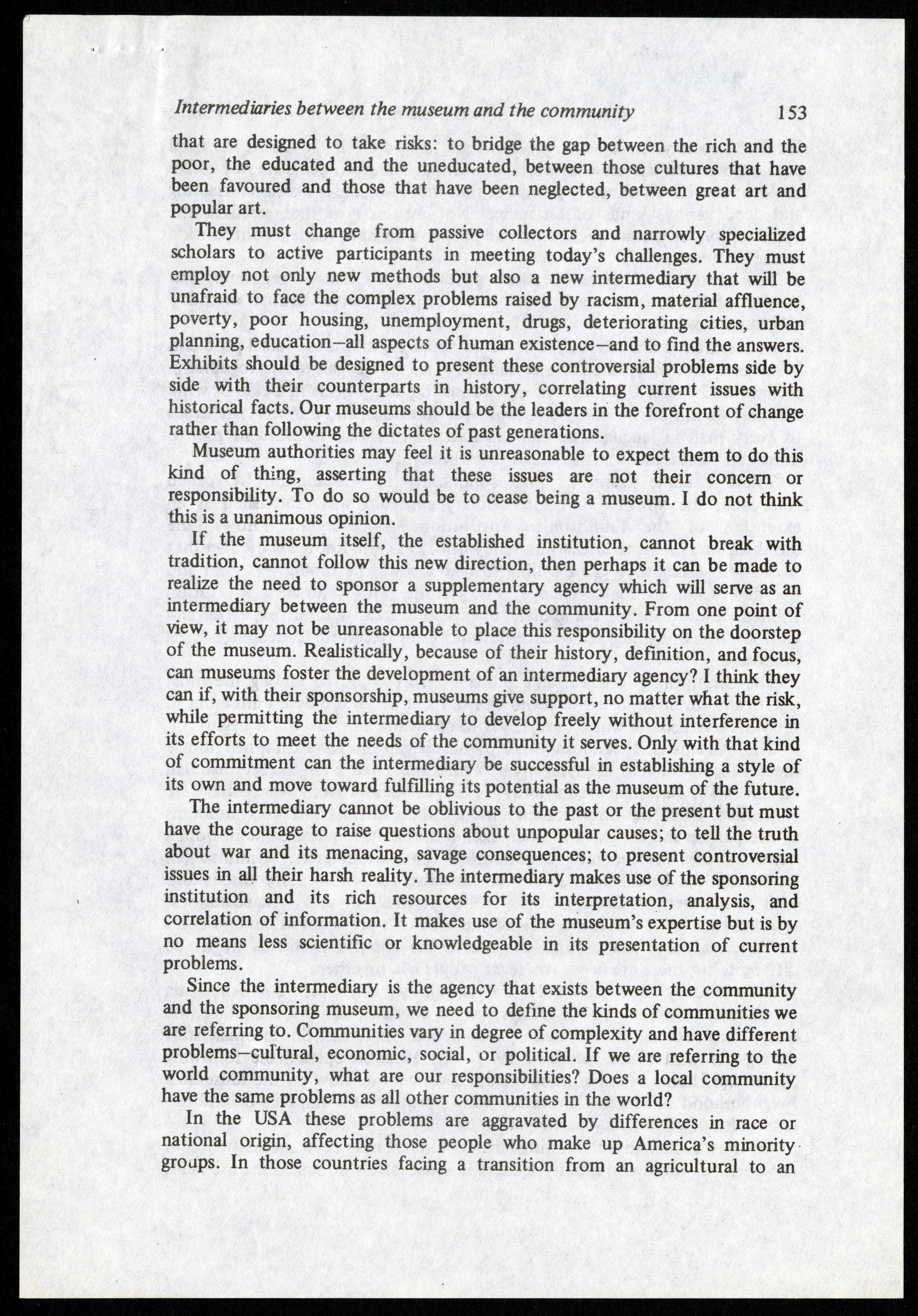

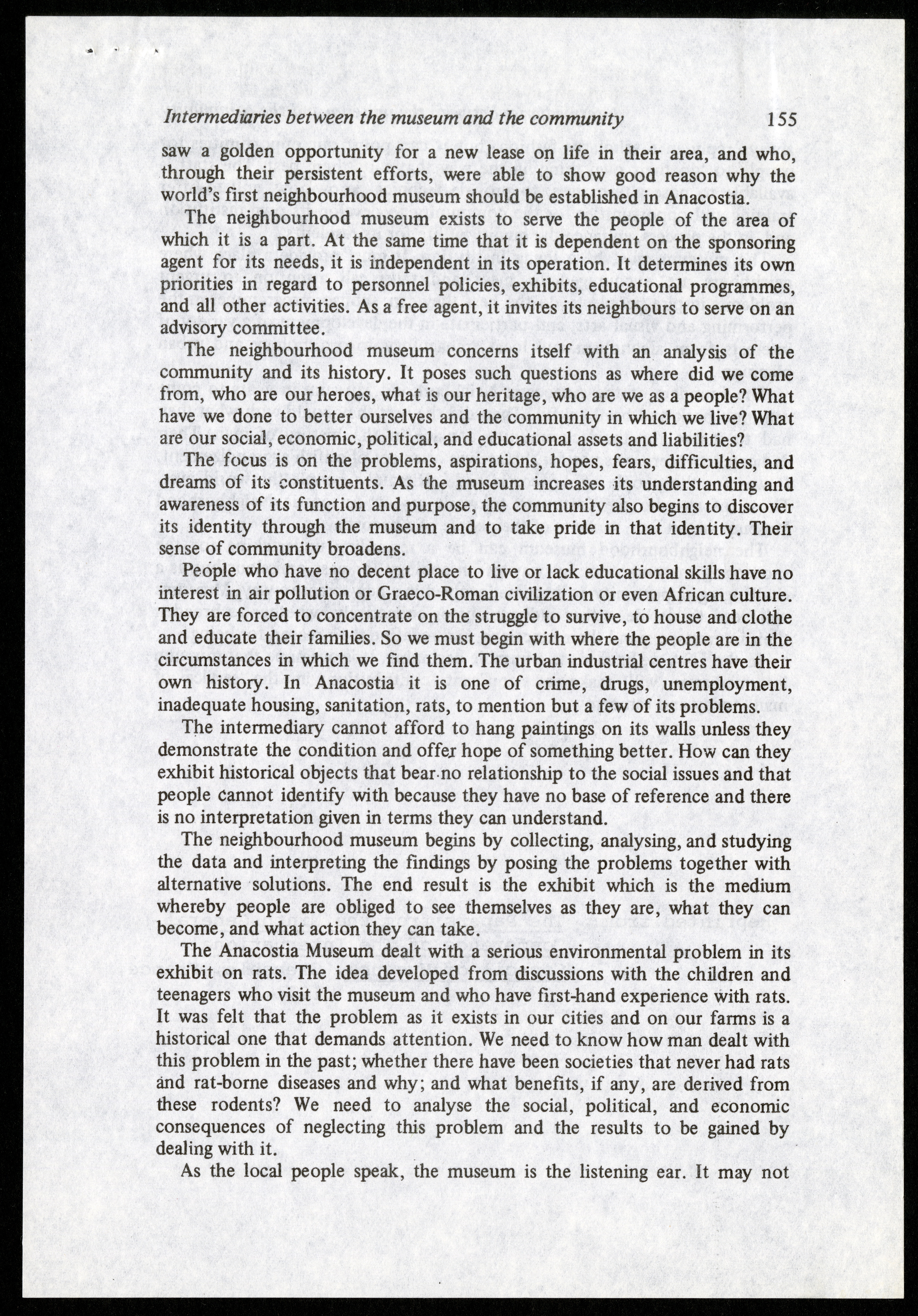
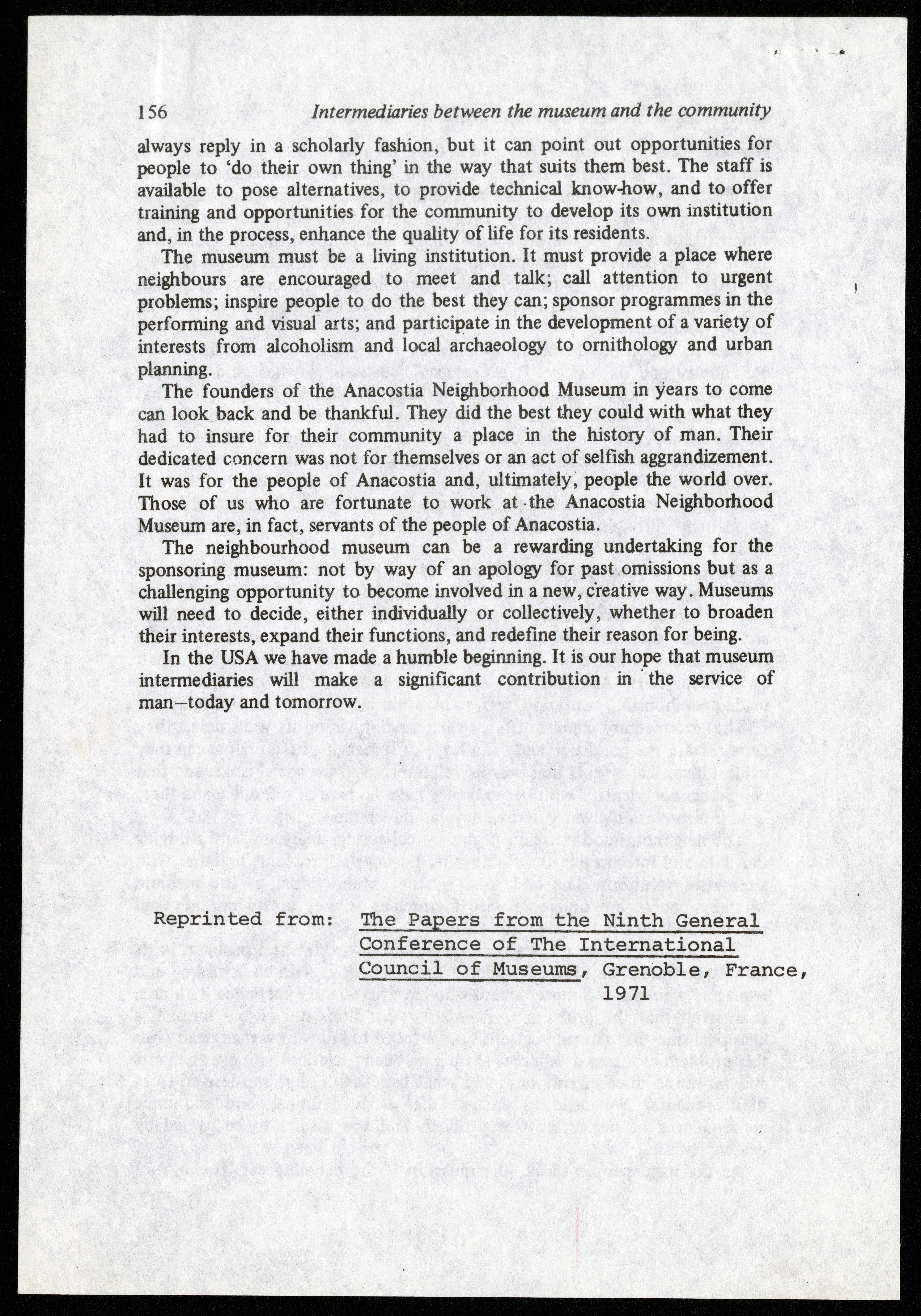
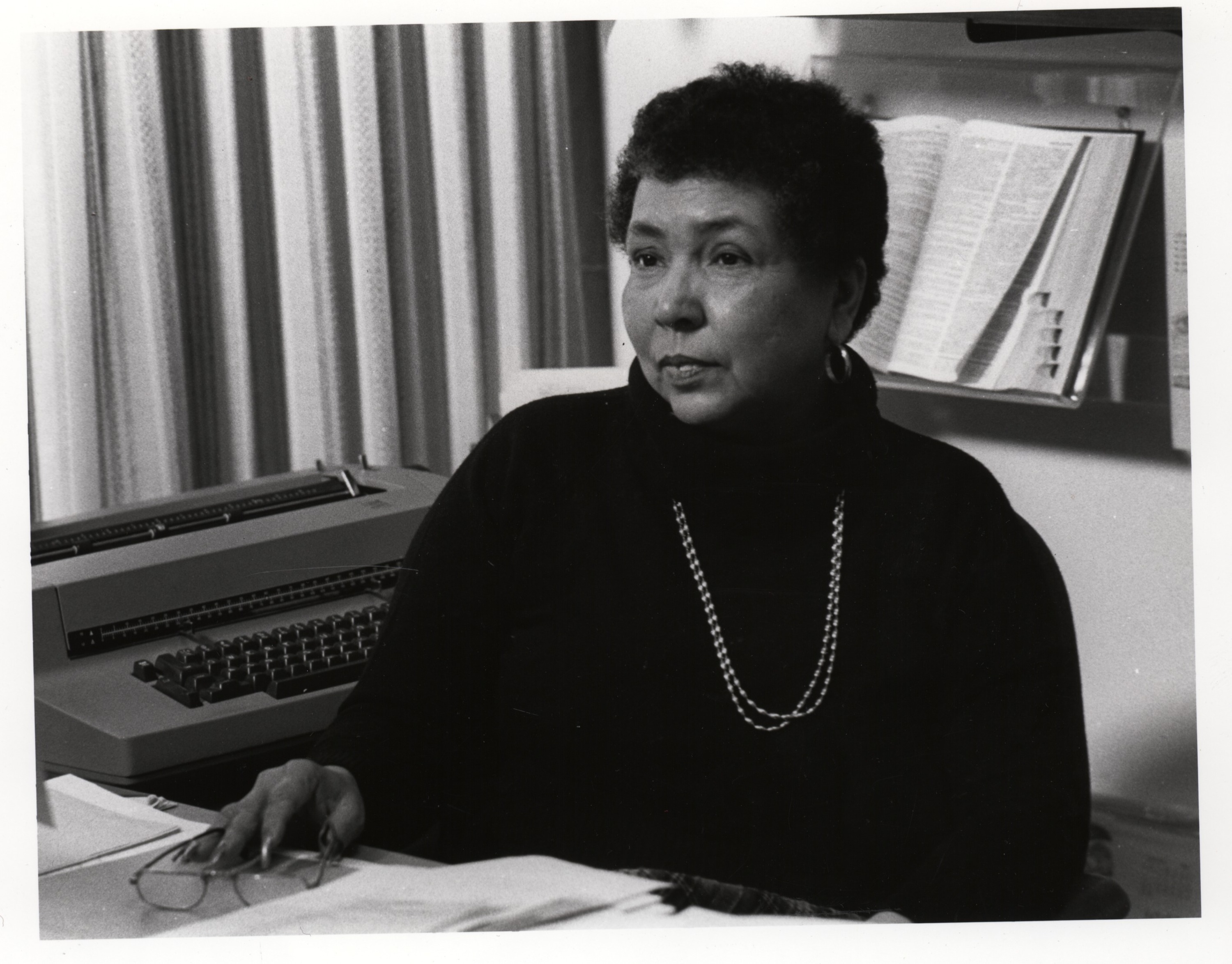

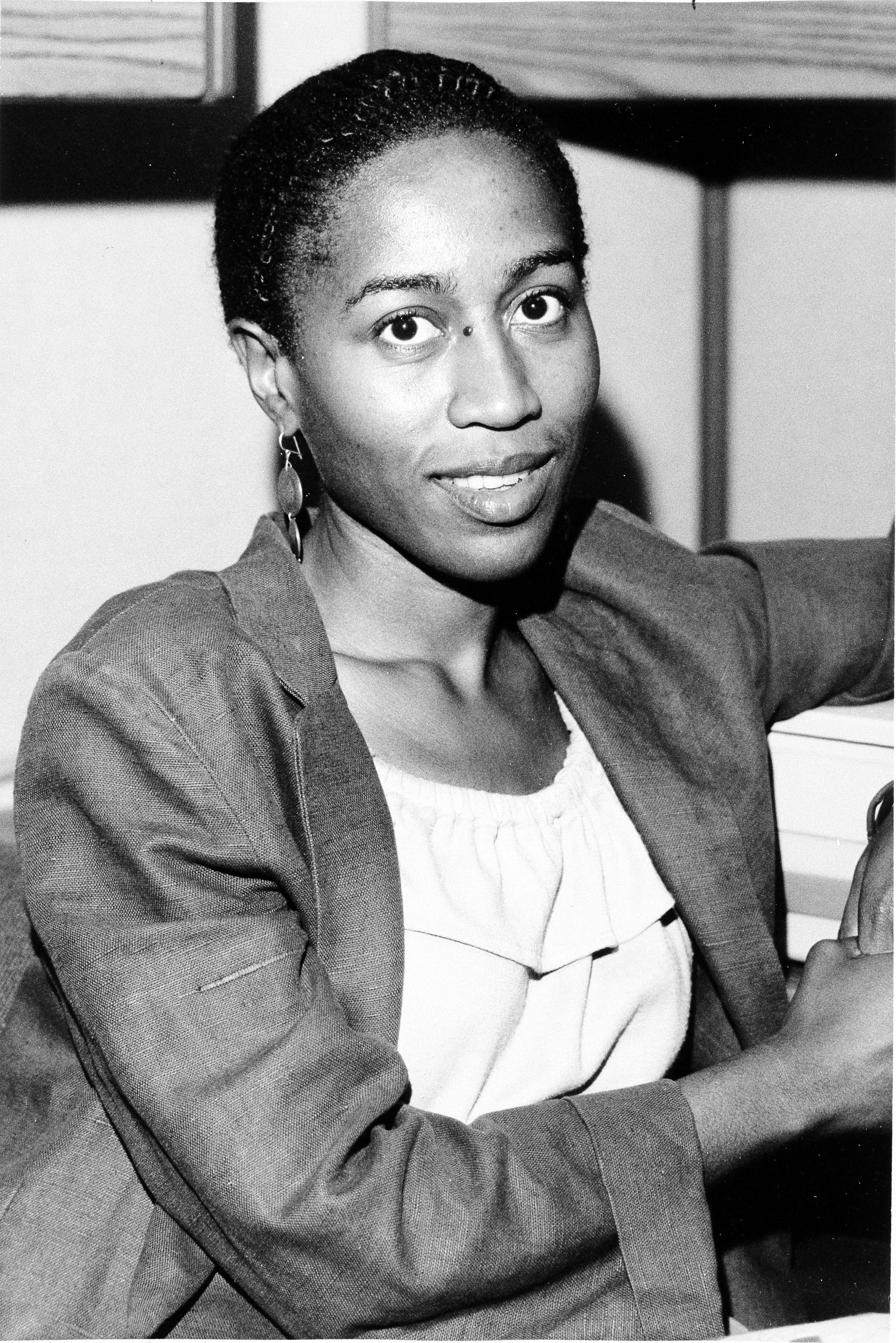
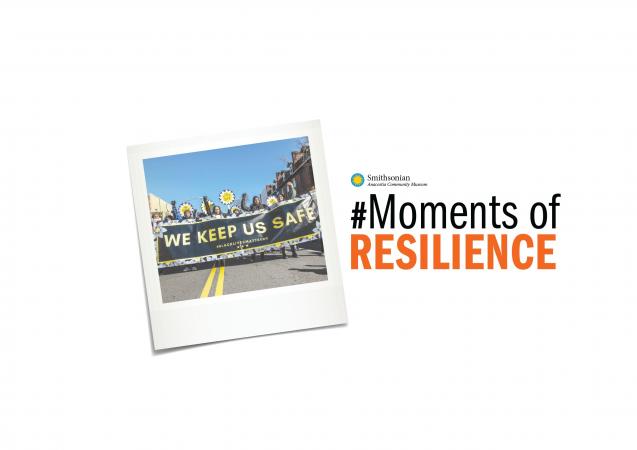
Leave a Comment